BMW has revealed the new iX3, a car that represents the beginning of a bold new era of design, technology, drivability and production methods as the first of its Neue Klasse models.
Making its world debut at the Munich motor show, the new electric SUV – previewed by the Neue Klasse X concept in 2023 – is the result of a £17 billion investment and four years of development. It is seen by the firm as one of its most important model launches to date.
The arrival of the iX3 marks a key milestone in BMW’s electric ambitions. The SUV ushers in an entirely new design that is described as “more BMW than ever”. It will directly influence the next 40 models from the brand.
BMW Group design boss Adrian van Hooydonk told Autocar: “The task was to create a design language that is brand new and attractive to both people that don’t know us and to people that do know us – but also one that can be traced back to our history, to the ’70s, even to the ’60s. That’s deliberate.”
Notably, the front of the new iX3 dispenses with the controversially large kidney grille of the previous era and replaces it with a new design that references Neue Klasse models from the ’60s and ’70s. The kidneys are also illuminated, rather than picked out in chrome, in an environmentally motivated move.
The design feature of narrow kidney grilles and headlights contained “as one graphical unit” is a nod to the BMW 2002 ‘Sharknose’, said Van Hooydonk.
Each Neue Klasse model will get its own “unique” light signature, he added, “so in the future, when we come with more Neue Klasse cars, each of them will be instantly recognisable”. For example, said van Hooydonk, the iX3 has a vertically oriented grille but the incoming i3’s will be horizontal. The new SUV measures 4782mm in length, 1895mm in width and 1635mm in height, making it similar in size to the incoming electric Porsche Macan and Audi Q6 E-tron.
New platform
![]()
The new iX3 is the first model to use the BMW Group’s new Gen6 platform, a cleansheet architecture that is said to be a “quantum leap forward” in terms of technology compared with today’s offerings.
The platform’s 800V electric architecture can handle a charging speed of up to 400kW – which, in theory, means the ability to add 217 miles of range in 10 minutes, although BMW admits this rate can be held for only around two to three minutes. It is also equipped with bidirectional charging – a first for BMW.
At its launch, the iX3 will be offered exclusively in 50 xDrive form, which draws electricity from a new 108kWh nickelmanganese-cobalt (NMC) battery. This uses cylindrical cells that are 20% denser and easier to package than modules (made up of square cells) found in today’s Gen5 packs.
Range increases by 30%, efficiency by 20% and charging speeds by 30%. The new cells also reduce production costs by up to 50%.
As a result, the 50 xDrive offers a WLTP range of 500 miles, which makes it the longest-range EV on sale in the UK, surpassing the Mercedes-Benz CLA. That’s despite power being deployed by two motors rather than one – traditionally not the most efficient set-up. Range is expected to increase further when a more effi cient, single-motor, rear-drive entry-level variant arrives next year.
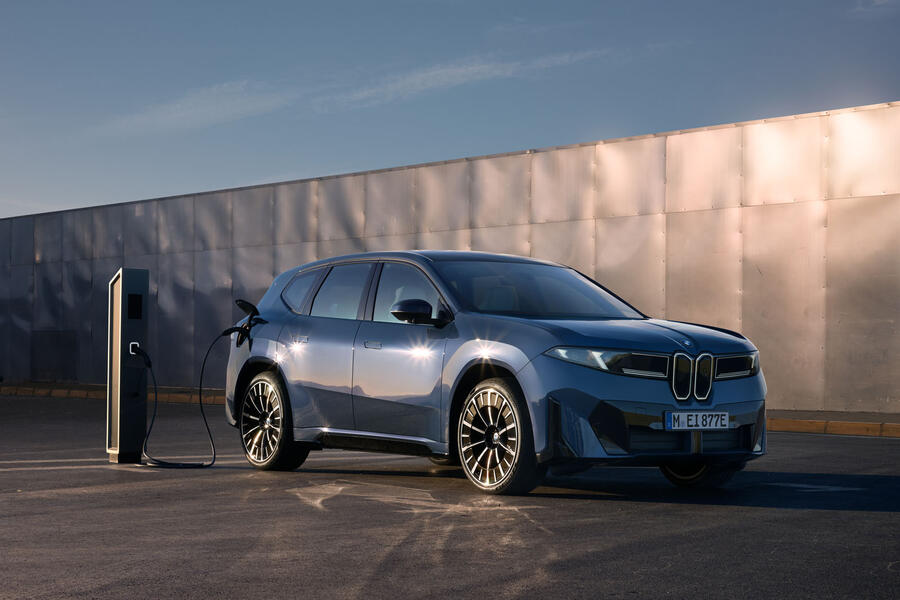
The impressive range figure is also aided by the iX3’s design. The sleek bodywork helps to achieve a drag coefficient of 0.24, which, BMW claims, makes it the most aerodynamic mid-size SUV on sale. The iX3 also has bespoke tyres that are claimed to reduce rolling resistance by 12%, adding 25 miles of range.
The 50 xDrive has a pair of excited synchronous motors which produce a combined 464bhp and 479lb ft, which enables the SUV to cover 0-62mph in a claimed 4.9sec. Top speed is governed at 130mph.
BMW has focused on giving the iX3 BMW-typical handling characteristics. Key to this is the new ‘Heart of Joy’ digitised nervous system, which controls everything about the driving experience. But van Hoydook emphasised that “it is built for driving” and is “not a computer on wheels”.
In another first for BMW, the iX3 uses pack-to-open-body construction, in which the packs are bolted directly to the chassis. This is said to increase structural integrity, optimises car integration, saves money on parts and reduces weight.
Interior
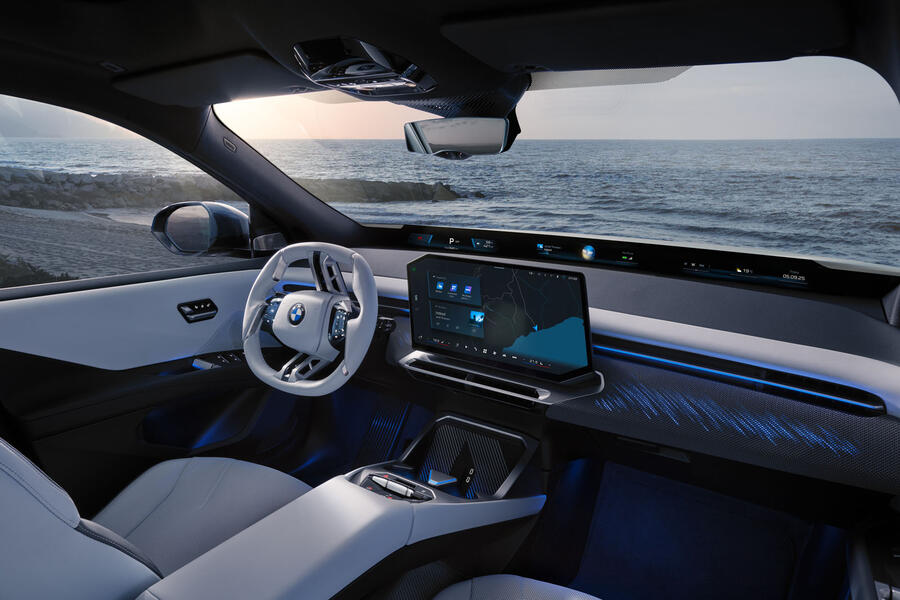
The new construction method also increases interior space. In an unusual move, BMW has bolted the front seats of the iX3 directly to the battery pack. This also keeps the car’s height as low as possible to aid aerodynamics.
The exterior’s minimalist design theme continues in the cabin. Previewed earlier this year, it is centred around a 17.9in infotainment screen that houses the controls for most of the car’s functions and runs BMW’s latest iDrive software.
Another first is the new ‘panoramic iDrive’ display. This 43.3in projection runs across the length of the dashboard just under the driver’s eyeline and displays key details such as vehicle speed and state of charge.
Some of the biggest challenges were to integrate the panoramic vision display and to set it up just right,” said van Hooydonk.
In another change, the new steering wheel adopts haptic controls.
Boot space is 520 litres with the seats up and 1750 litres with them folded down. There is also a 78-litre storage space under the bonnet.
The iX3 will be produced at BMW’s Debrecen plant in Hungary. UK pricing for the 50 xDrive will start at £58,755 and top out at £62,755 for the 50 xDrive M Sport Pro. First deliveries will begin early next year.


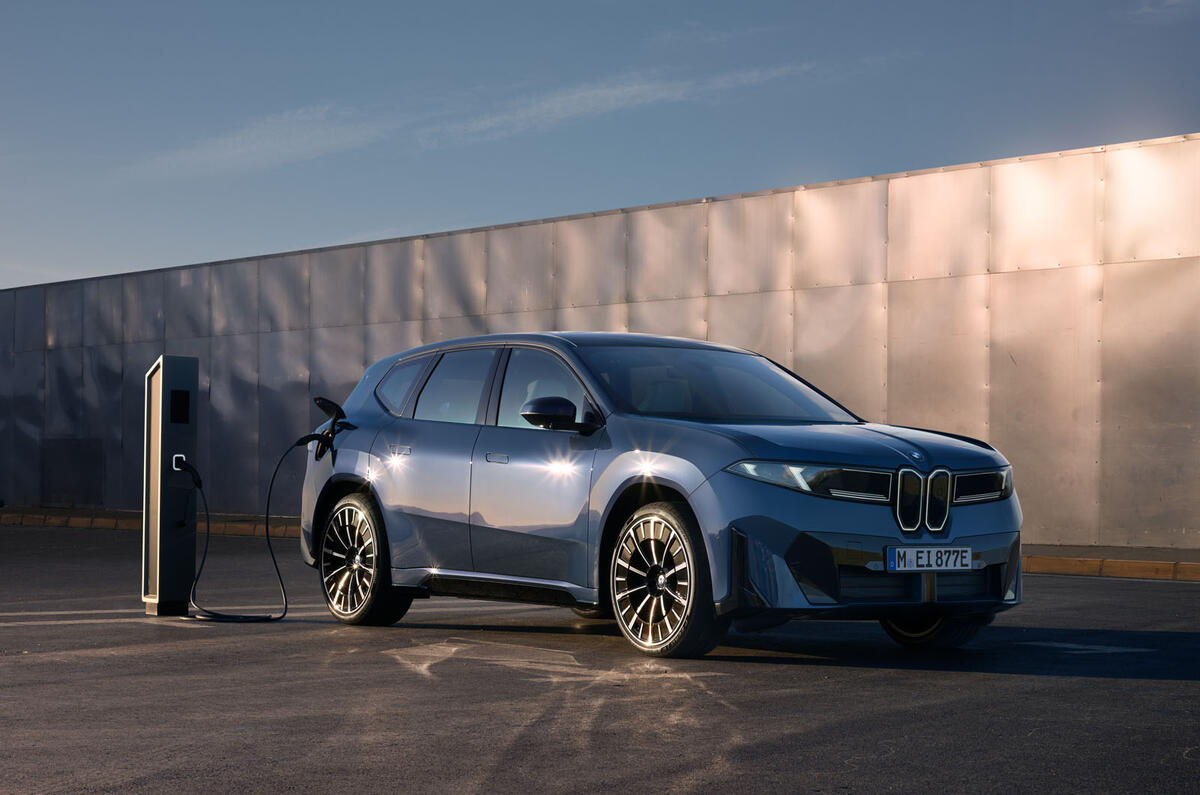
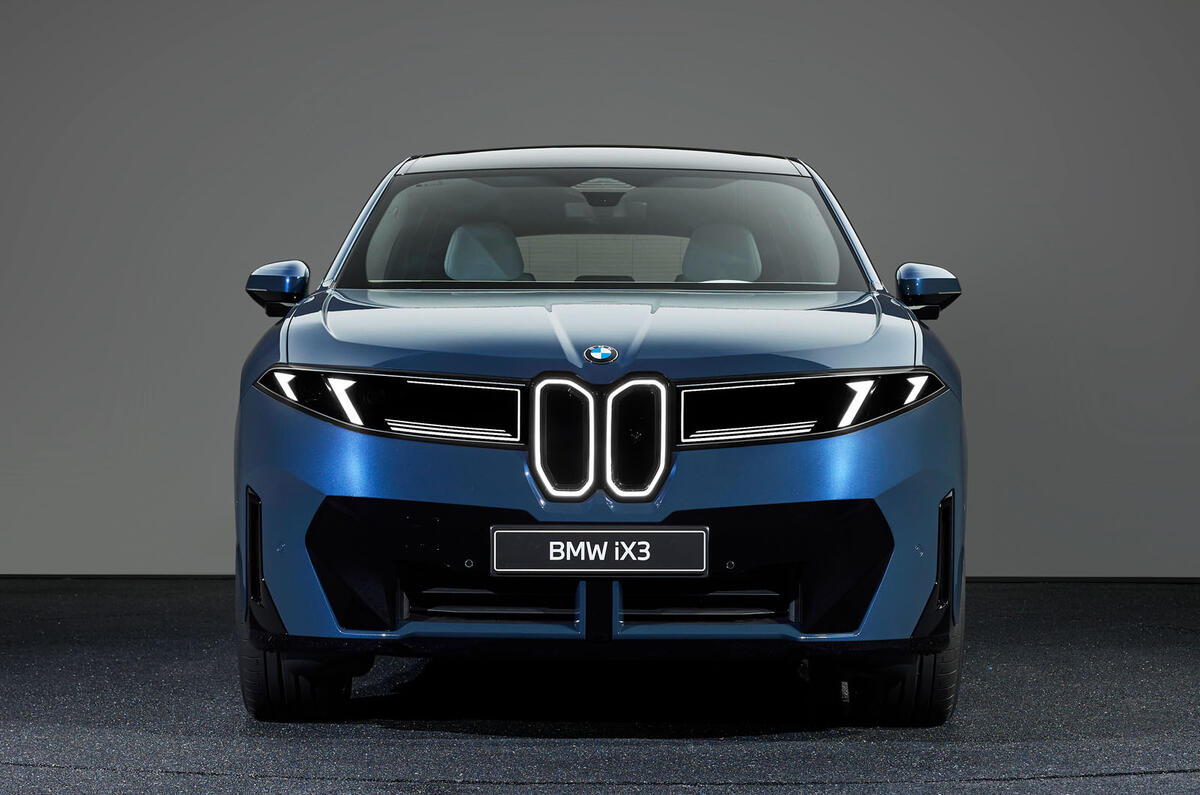
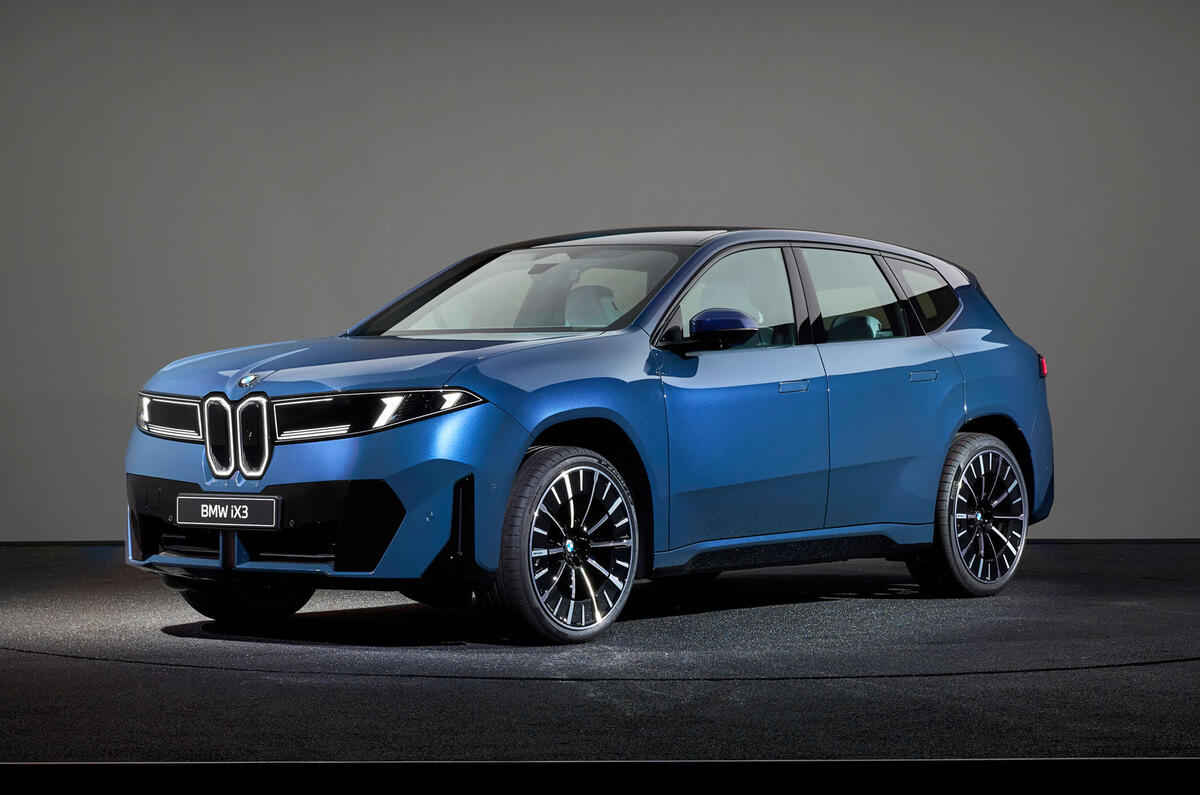
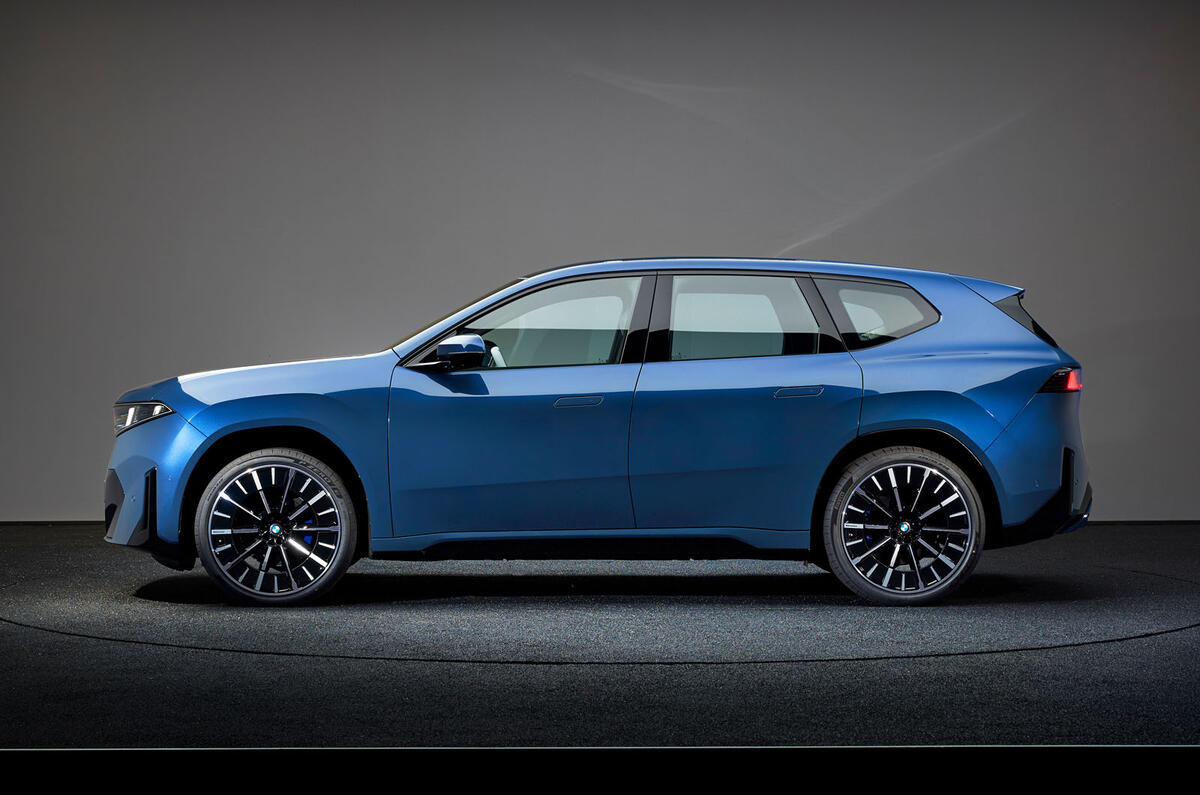
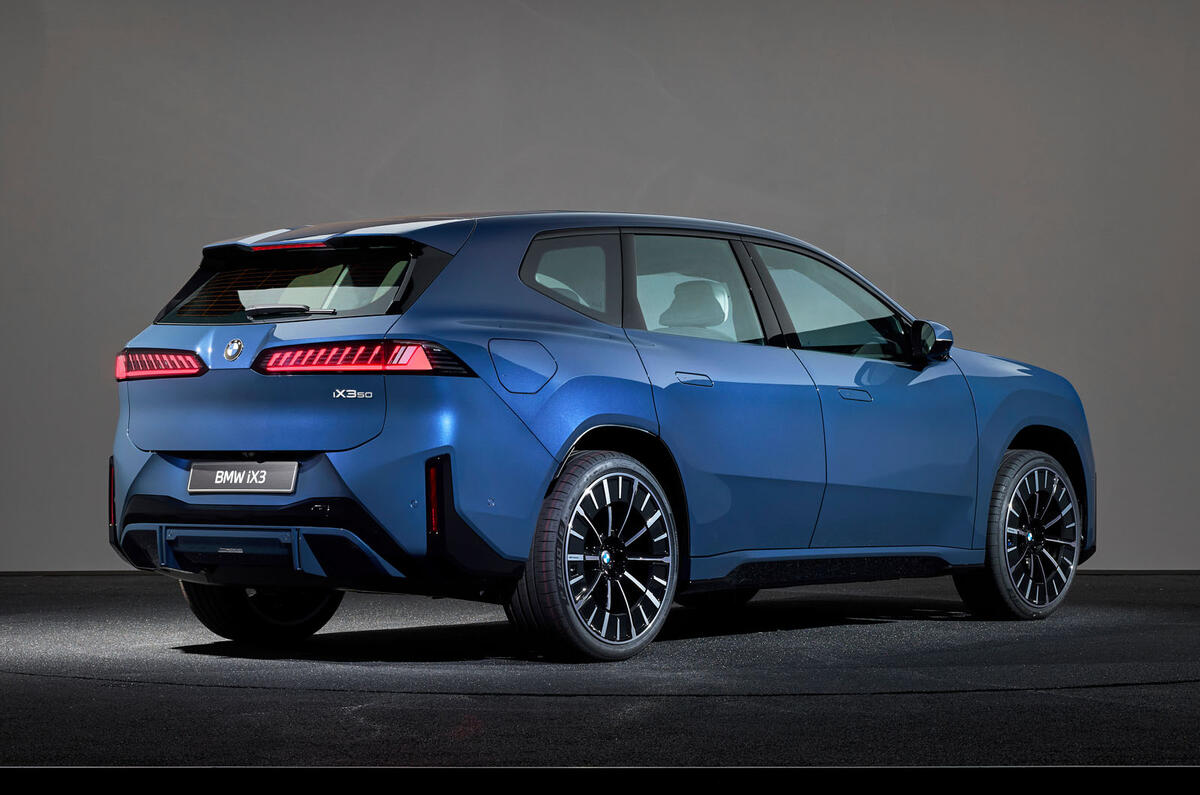
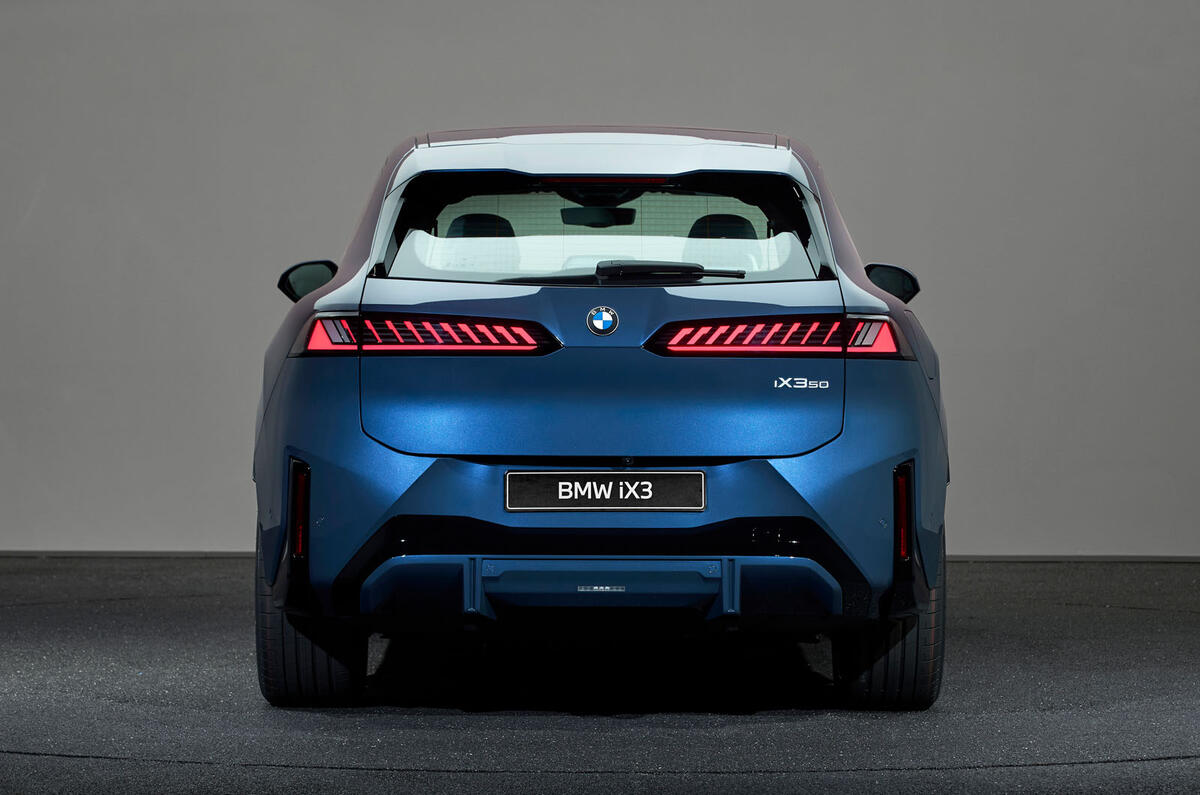
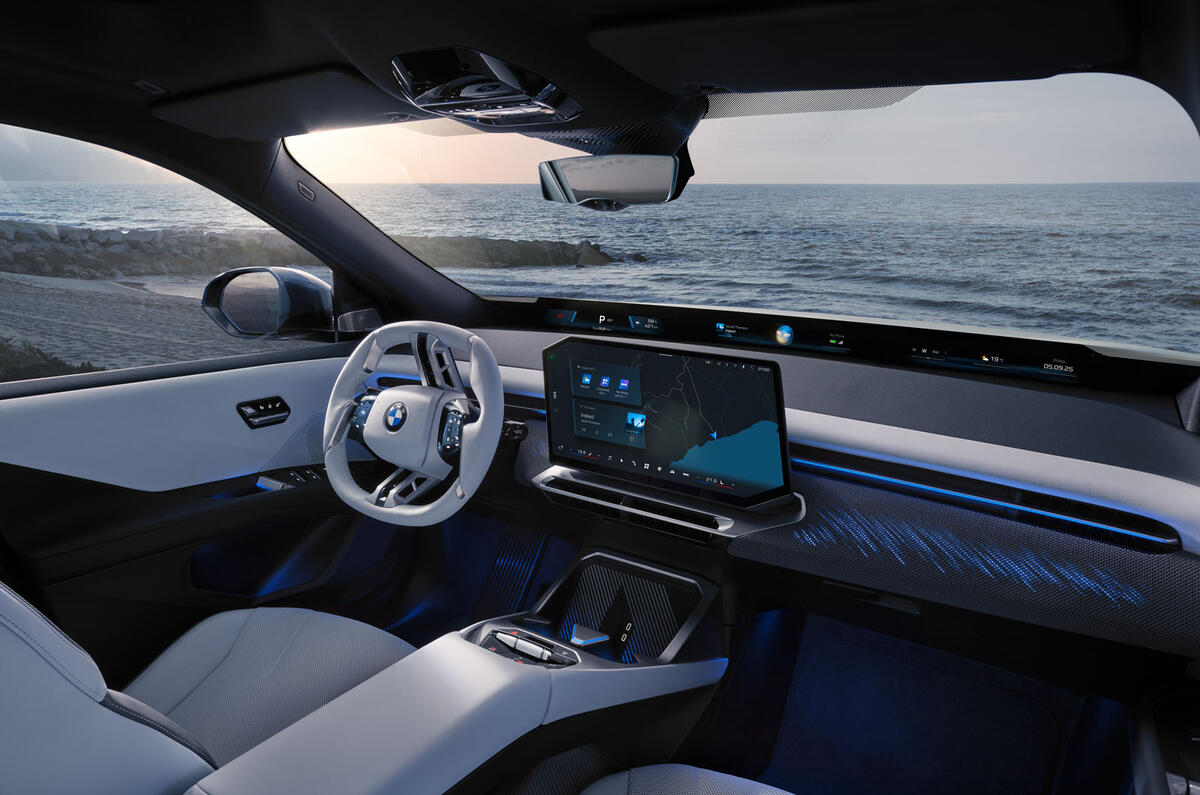

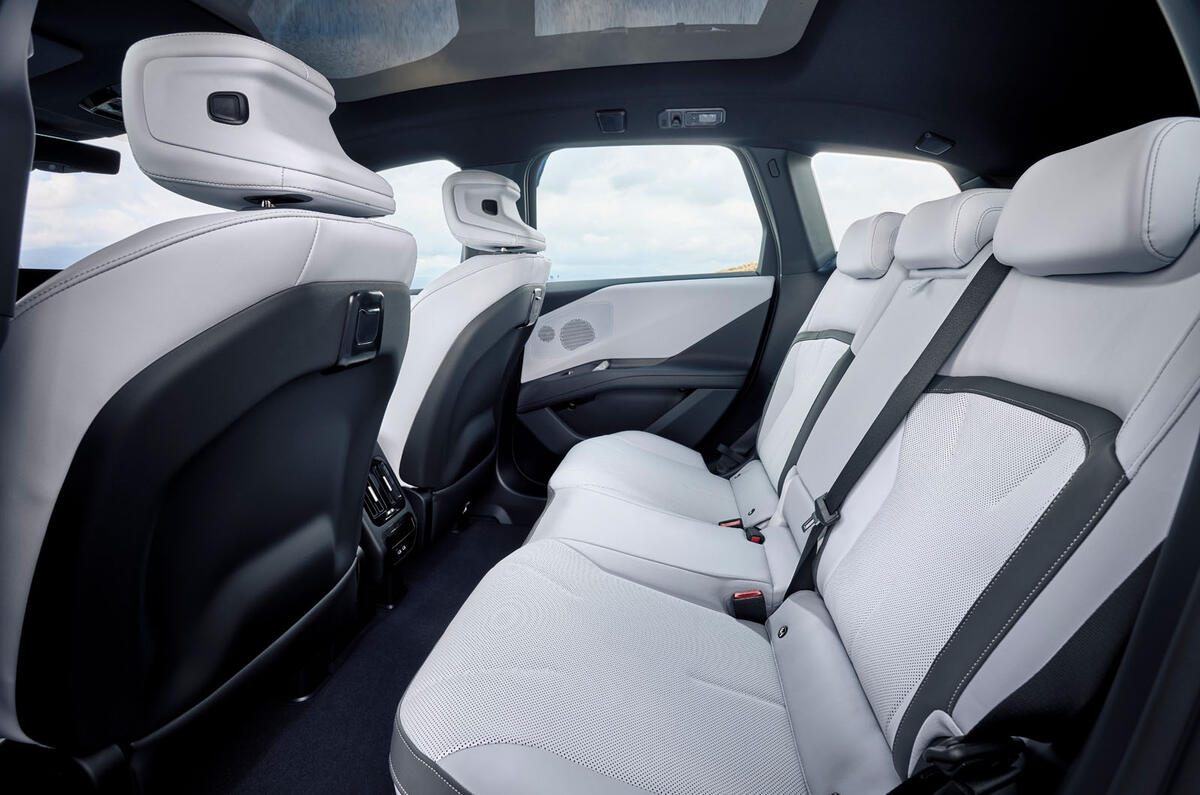
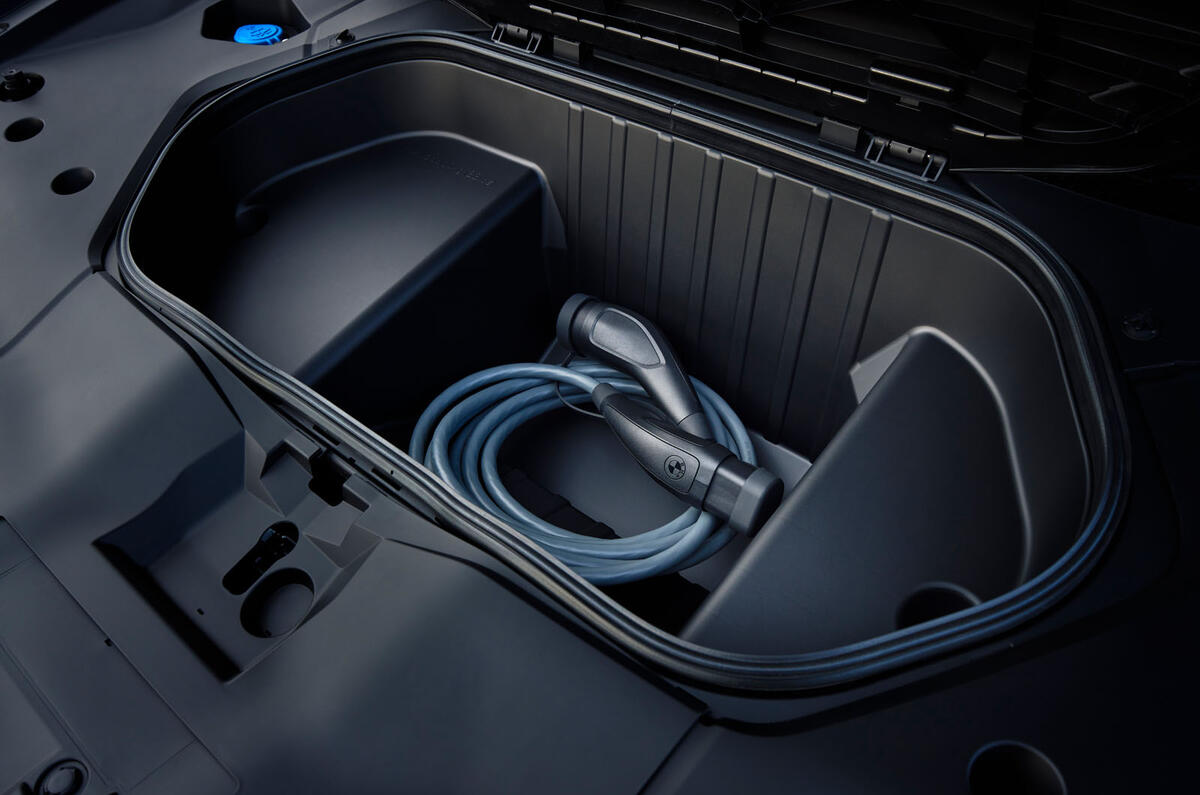
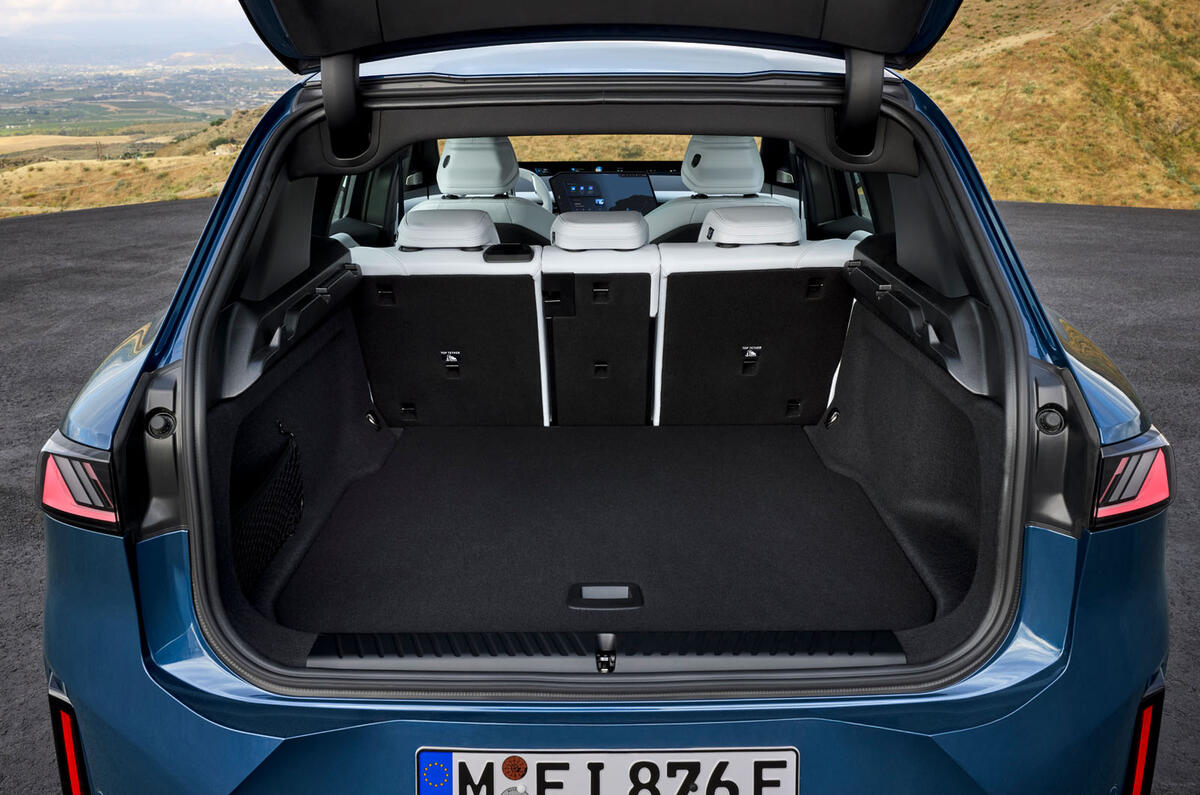
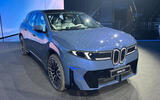
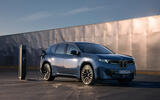
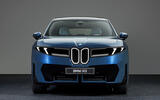
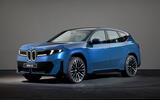
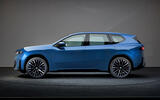

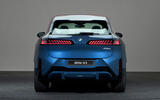

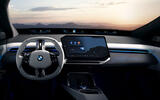

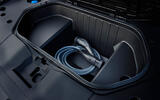
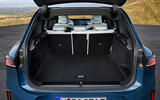






Join the debate
Add your comment
Seems to me much like the i4, a technically decent car, but ugly outside and poorly designed dashboard with a screen plonked on it. Maybe my tastes are not in tune with most of the car buying public.
Could they make it any uglier. I remember when they introduced the 'bangle butt' in the early 2000s 7 series which was somewhat controversial but this looks look some badly designed Chinese wannabe Binmer. Are they trying to sell less cars?
Maybe the best BMW X series so far and a very good EV. The shape is more cohesive and the grille is a vast improvement on the chipmunk effect of recent years. The interior is good although the steering wheel needs to be tried before I would buy and haptic controls have been hated by everybody so far so why use them again? The range is all you need even when dialed back to the reality of 270/300 miles and the super charging rate will greatly shorten the working life of the battery pack so slow home charging is best. Over all I think it is a good EV car....but the battery is always aging and the replacement cost will be huge...just like an ICE engine...yet people's fear will mean serious depreciation and a realistic working life for the car of maybe ten years at best. It is the way forward..I'm not sure it is the correct way for the Planet and the future with the bursting human population now out of control...but I won't be here to find out!